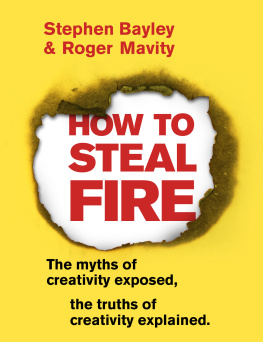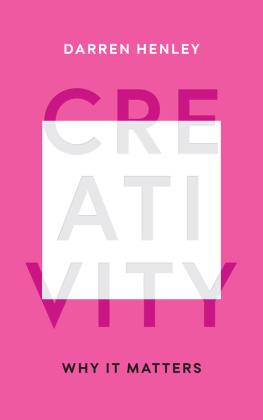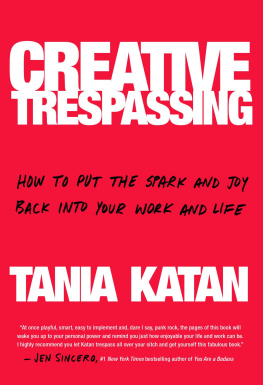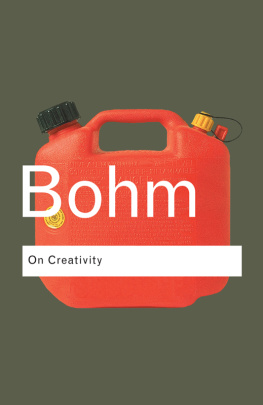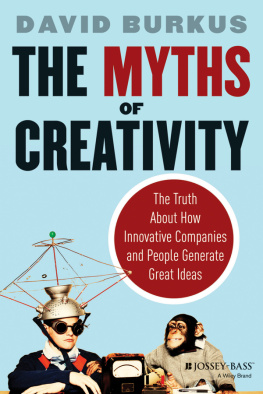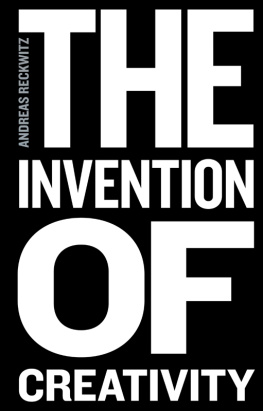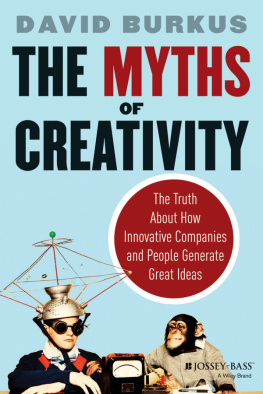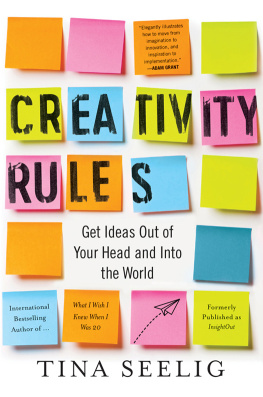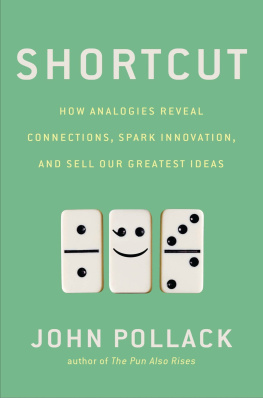HOW
TO
STEAL
FIRE
The myths of creativity exposed, the truths of creativity explained
Stephen Bayley & Roger Mavity
TRANSWORLD PUBLISHERS
6163 Uxbridge Road, London W5 5SA
www.penguin.co.uk
Transworld is part of the Penguin Random House group of companies whose addresses can be found at global.penguinrandomhouse.com

First published in Great Britain in 2019 by Bantam Press
an imprint of Transworld Publishers
Copyright Stephen Bayley and Roger Mavity 2019
Stephen Bayley and Roger Mavity have asserted their rights under the Copyright, Designs and Patents Act 1988 to be identified as the authors of this work.
Every effort has been made to obtain the necessary permissions with reference to copyright material, both illustrative and quoted. We apologize for any omissions in this respect and will be pleased to make the appropriate acknowledgements in any future edition.
A CIP catalogue record for this book is available from the British Library
Version 1.0 Epub ISBN 9781473555792
ISBN 9780593080085
This ebook is copyright material and must not be copied, reproduced, transferred, distributed, leased, licensed or publicly performed or used in any way except as specifically permitted in writing by the publishers, as allowed under the terms and conditions under which it was purchased or as strictly permitted by applicable copyright law. Any unauthorized distribution or use of this text may be a direct infringement of the authors and publishers rights and those responsible may be liable in law accordingly.
1 3 5 7 9 10 8 6 4 2
Better to disintegrate than rot.
This book is dedicated to the self-unemployed.
The minstrel Leonard Cohen saw a connection between error and benefit:
There is a crack in everything
Thats how the light gets in.
(Anthem, 1992)
The novelist Howard Jacobson explained:
Savour that! At a stroke, weakness becomes strength and fault becomes virtue. I feel as though original sin has just been re-explained to me. There was no fall. We were born flawed. Flawed is how we were designed to be. Which means we dont need redeeming after all. Light? Why go searching for light? The light already shines from us. It got in through our failings.


About this book
Stupidity has been defined as repeating behaviour and expecting a different result. Indeed, Stephen Bayley and Roger Mavity have done this before: an earlier collaboration was Lifes a Pitch, but it became a global bestseller, so they have risked trying again. Like that book, this one has two voices. They say the same thing, but try not to repeat themselves.
Roger Mavitys career has been mostly in and around advertising, an environment with ample opportunities to test the hard, bright flame of creativity against the lumpen, drab, grey stuff of harsh and extinguishing reality. He writes with a wisdom that is sometimes rueful but always practical. Once lit, the flame never goes out.
Stephen Bayley is a recovering academic. An early career in universities left him with a didactic streak a mile wide (and, critics say, an inch deep). Later, he became the person for whom design guru was coined. He writes to prompt and suggest, not to explain or justify.
They like to think they make a good double act.
Bayley and Mavity met many years ago in a business world designed by their patron, Terence Conran. In those days, Conran was an eponym for all things creative. Today, Bayley having midwifed the birth of Conrans Design Museum is an author, columnist and critic. Mavity having managed Conrans design and restaurant businesses is a writer and photographer with an international reputation.
Each of them has written a series of short chapters, identified by their initials and by a different typeface. In keeping with their personalities, Stephens typeface is traditionally elegant, while Rogers is plainer and blunter. Some chapters debunk the conventional wisdom and fashionable nonsense which surround this arcane subject; others explore the underlying truths.
Creativity includes the whole of Gods and mans endeavours, including volcanoes and pop rivets, waterfalls and popcorn, giraffes and Negroni sbagliato, so its a big subject for a book of conventional size and length. Even to ponder a comprehensive treatment would be an absurd folly. So the chapters are not arranged in a logical narrative sequence, but more as a terrazzo of ideas.
The aim is not authoritative analysis of an ineffable subject, but rather to hint about how to steal fire and ignite thought.

Introduction: a guide for the oppressed
A personal note from one of the authors
Given my own generous endowment of cussedness, lack of realism, demented optimism, pig-headedness, astonishing lack of empathy, reluctance to compromise, tragic lack of patience or humility, inclination to fantasy, toxic vanity and absolute refusal to cooperate on any matter whatsoever, Im well disposed to sympathise with that legendary figure: The Creative Personality.
Often I champion him and have a stump speech where I talk about the primacy of ideas over admin. Of this I have no doubt. No one cares who was the fixed-cost accountant on the Great Pyramid, but wed all like to know the bedroom habits of the architect. Or put it this way: the name Ettore Bugatti moves the spirit along more positive vectors than the name Arthur Andersen. No one, surely, needs persuading about creativity.
Ideas are what move civilisation along, giving it point, style and meaning. Creative types have lots. Not because it is good for business, simply because it is in their nature.
Ideas are what move civilisation along, giving it point, style and meaning. Creative types have lots. Not because it is good for business, simply because it is in their nature. Contrariness is part of the job description. When a government official once asked me how best to stimulate creativity, I said, Make it illegal. Criminalising possession and generation of ideas would stimulate even more than the jug of hock and soda-water that Byron recommended to poets.
The most superlatively creative type I have ever met was the late, great Paul Arden, who, if any single person can make such a claim, established the critical reputation of Saatchi & Saatchi in its Augustan period. I really liked Paul and we became quite close. We went to each others houses and knew each others children. Our wives became friends.
I just mention this to put into context what follows. Paul was maddeningly exasperating and contrary. SB (charmingly): Isnt it a lovely day? PA (crossly): What do you mean? We had a project to found a business together. Each of us thought this interesting, but third-party advice was unanimous. They said: You must be out of your minds! We were. That was the point.
Arden and I would never have got anything done, but we would have thought many thoughts. We would have been a Fukushima of high-power futility. So sometimes I wonder if creativity is over-rated, a question discussed briefly later in the book. A lot of people have shapeless, glowing talent, but very few have crisply delineated skill. The workmanlike craft of execution may be just as important to the act of genius as the whack-job creative concept.

